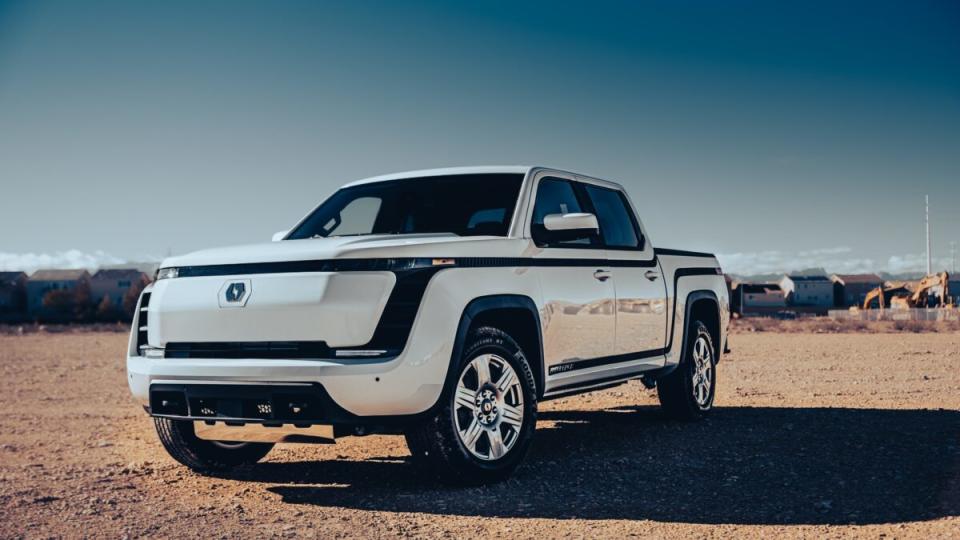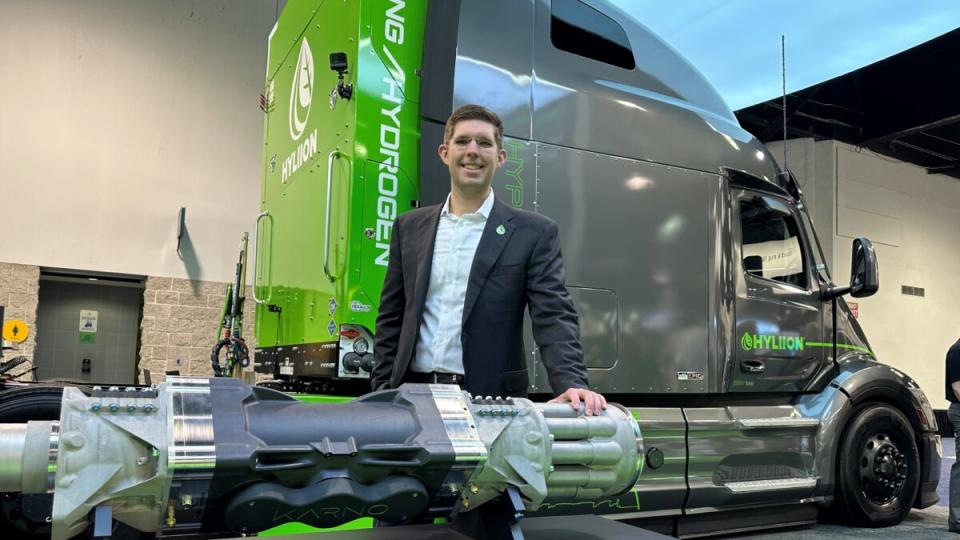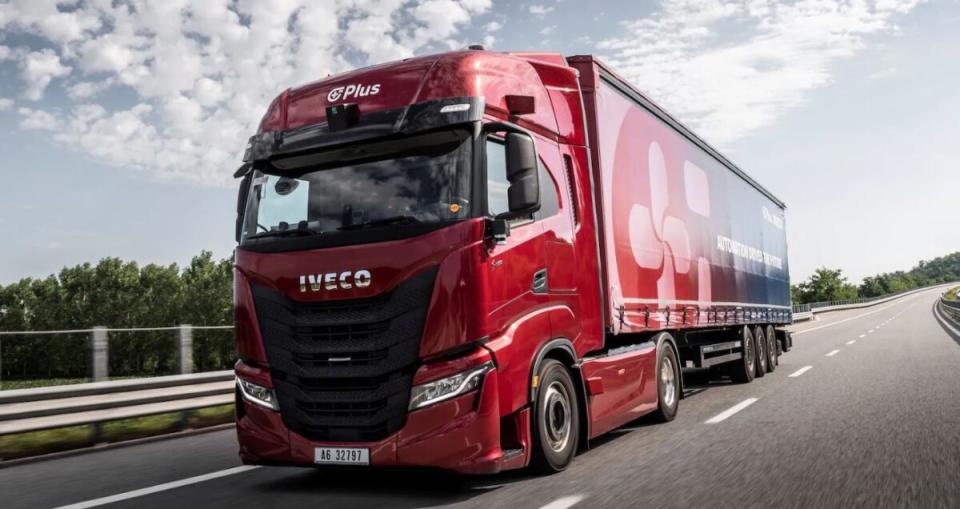Carnage grows among transportation startups

In the world of electric vehicle and autonomous trucking startups, the picture of winners and losers is far from complete. But activity in recent weeks and months shows the inevitable shakeout is fully underway.
It’s too soon to know which companies will ultimately survive and in what form — independent, merged or something else. A company’s balance sheet is its strongest sign of health. More cash — and access to borrowing — suggests a longer runway, a better chance to generate revenue, gross margin and eventually profits.
The SPAC frenzy during the pandemic years masked this reality. Hundreds of companies conducted reverse mergers with special purpose acquisition companies created solely to merge with promising startups.
Transportation SPACs took a hit harder than many. Overly optimistic projections collided with once-dazzled investors who decided profits were more important than promise when the capital markets tightened.
Sketchy due diligence and inexperienced SPAC sponsors set up some companies for failure once the easy money ran out. Young companies unprepared for the rigors of public life ran through their largess only to find the spigot to more capital shut off by higher interest rates.
Investors abandoned many of the companies. A couple became meme stocks for day traders. Short sellers got into the game for a quick buck, betting on further drops in stock prices. A few bad actors emerged as well.
Lordstown’s crash and burn
Almost from the beginning, it was clear that some startups had little chance of thriving, let alone surviving against legacy competitors.
Lordstown Motors, which planned a commercial electric pickup truck ironically called Endurance, got a former General Motors plant essentially for free. It raised more than $675 million in a SPAC that took just 11 weeks to close. In May 2022, it sold the plant — and its manufacturing soul — for $170 million to Taiwan’s Foxconn. Lordstown filed for bankruptcy on June 27. Its ticker symbol (NASDAQ:RIDE) disappears Friday following delisting.
Founder and former CEO Steve Burns, a serial entrepreneur and former CEO of Workhorse Group, coaxed GM into giving him the massive assembly complex in northeast Ohio as the automaker tussled with the UAW over the future of the plant and sought to fend off negative tweets from former President Donald Trump.
Burns disposed of $61 million in Lordstown stock in the months after being pushed out by directors who found some truth to short seller Hindenburg Research’s report of inflated and phony orders for the Endurance. Burns dumped his remaining 7% stake for about $3.8 million as the company bled out.
Even if everything had gone perfectly for Lordstown — and practically nothing went right — its chances of being more than a bit player against the Ford F150 Lightning pickup and electric pickups from GM and Stellantis were practically nil. And that doesn’t count electric pickup makers Tesla and Rivian.

Nightmare on ELMS street
Electric Last Mile Solutions had a unique approach to making small battery electric vans: Import almost everything from China and assemble the trucks at the Indiana plant once home to the massive Hummer H2.
Coincidentally, ELMS CEO Jim Taylor led Hummer in its final days before GM shuttered the brand in 2010. (An electric Hummer now is sold as a GMC sub-brand.)
ELMS took SPAC money — $250 million from Forum Merger III Corp. in June 2021 — but quickly ran short. Insider trading by Taylor and former Chairman Jason Luo, once head of Ford of China, hastened ELMS’ bankruptcy liquidation filing in June 2022. Taylor and Luo were pushed out in February 2022.
Mullen Automotive Inc. purchased ELMS’ assets. Mullen makes passenger and commercial electric vehicles and is a provider of solid-state polymer battery technology. Mullen’s acquisitions include a 60% stake in electric truck maker Bollinger Motors. Mullen last week generated its first revenue, $308,000, from the sale of 22 EV cargo vans.
Mullen financially engineers its survival with moves like its 1:25 reverse stock split in May followed by Thursday’s announced $25 million stock buyback. The buyback drove its share price up more than 29% to close at 22 cents a share.
Dead on Arrival?
Arrival, the U.K.-based startup planning modular assembly of small vans is nearly out of money. Its first SPAC combination with CIIG Merger Corp. raised $660 million. Until this week, it was planning a second SPAC merger, but it canceled the arrangement. Layoffs and reworked business plans may keep Arrival around for a while. But its prospects are bleak.
Other names unlikely to be remembered include XL Fleet — sold to the Shyft Group — and Canoo, which is trying to sell stock and warrants to bolster its balance sheet and plans a small delivery van. Walmart ordered 4,500 of the vans in 2022, possibly as a blocking move to prevent Amazon from acquiring Canoo.
On the autonomous trucking scene, Embark Trucks and TuSimple are moving out of the picture. Embark ran out of money and sold itself to Applied Intuition Inc. for $71 million in May. TuSimple hollowed out its U.S. workforce by another 300 employees in May. It is now focused on driverless trucking in China and Japan and may try to sell its U.S. operations.
Waymo Via, the autonomous trucking successor of the Google self-driving car program, is on hiatus after parent Alphabet Inc. cut workers from its “Other Bets” area.
Brighter prospects
So which startups stand the best chance of being around five years from now?
Kodiak Robotics, which eschewed a SPAC merger, is emerging as an autonomous trucking leader. Startup digital freight brokerage Loadsmith ordered 800 of its autonomous driving systems beginning in the second half of 2025 through the end of the decade.
Aurora Innovation is marching toward commercialization of its AuroraDriver in late 2024 with Class 8 truck partners Volvo and Paccar. After being beaten down, Its stock has nearly nearly doubled in price in the last 30 days, closing Thursday at $2.76 compared to $1.50 on June 5.
Torc Robotics, financially safe in the arms of parent Daimler Truck, continues to expand pilot operations. But it is in no hurry to pull the driver from its trucks.
Gatik, the autonomous delivery truck company, so far faces no significant competition for its short-haul, repeatable route efforts.
On the bubble
Hydrogen fuel cells are receiving more attention and incentive support than ever. That could bode well for Nikola Corp., which is selling off its inventory of battery electric trucks and plans to build them only by special order while focusing on hydrogen fuel cell-powered trucks.
Nikola’s effort to build a hydrogen fueling infrastructure received a $41.9 million grant from the California Transportation Commission on Wednesday.
Hyzon Motors, currently the only maker of a single fuel cell system for heavy-duty trucks, has a project with Hyliion Holdings to make a fuel cell version of Hyliion’s Hypertruck. Otherwise, its business approach is asset and capital light. That may help Hyzon get to positive revenue sooner, which in turn could make the technology bankable for raising new capital.
Hyliion itself begins production of its first-generation natural gas-electric Class 8 hybrids in Q4. The company, an early SPAC play, has retained much of the money it raised. So far, Hyliion has avoided the missteps of other startups while partnering with powertrain giant Cummins Inc. and purchasing fuel-agnostic generator technology from General Electric.

Briefly noted …
Iveco and Plus have begun public road testing of Iveco’s S-Way heavy-duty truck equipped with the PlusDrive partial autonomous system in Germany.

The liquidation of Romeo Power’s assets includes 200,000 Samsung lithium-ion battery cells among machinery, robots and office equipment.
All those electric vehicle batteries have to go somewhere when their useful life is done. Guidehouse Insights is out with a report exploring recycling options.
A group of 65 businesses and organizations is asking the California Senate to vote against California Assembly bill 316, which would ban driverless trucks in the state.
The state of Michigan and Daimler Truck North America are building a $13.5 million Mobility Charging Hub on DTNA land in Redford near Interstate 96 in Detroit.

Daimler Truck North America and the state of Michigan are building a $13.5 million charging hub on DTNA land near Interstate 96. (Photo: Daimler Truck North America)
That’s it for this week. Thanks for reading. Click here to get Truck Tech via email on Fridays. And tune in to Truck Tech on FreightWavesTV on Wednesdays at 4 p.m. EDT and later on YouTube.
The post Carnage grows among transportation startups appeared first on FreightWaves.
